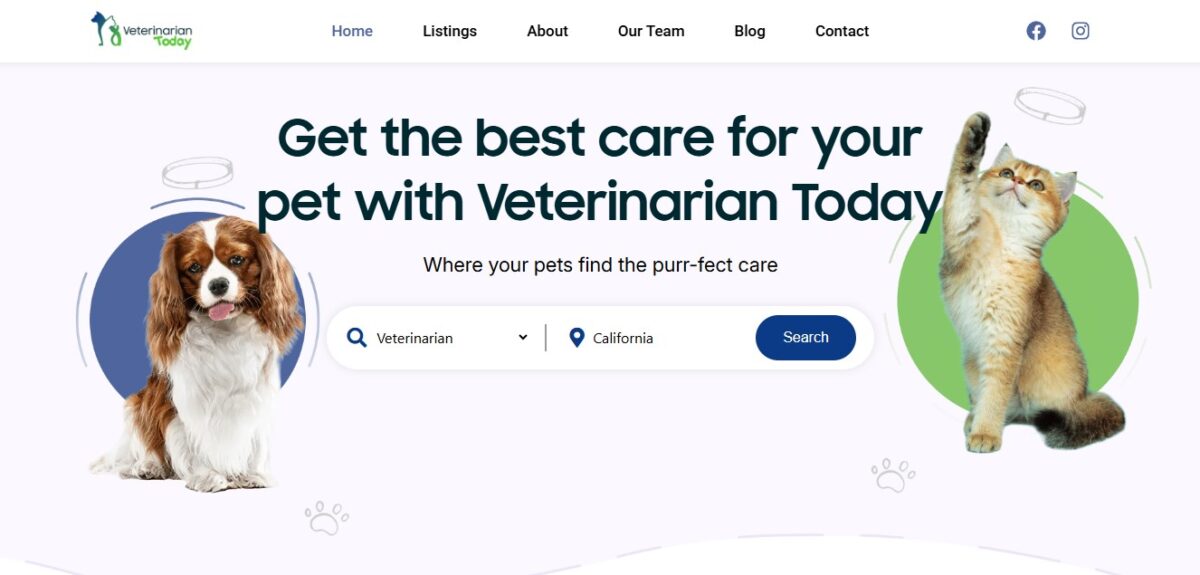
Pet parents everywhere are seeking better ways to improve their furry companions’ health—and one popular solution is transitioning to raw food diets. This back-to-nature approach is gaining momentum as more dog and cat owners recognize the connection between food and long-term vitality.
In this blog, we’ll explore what raw food diets are, the science-backed benefits, and how they compare to traditional pet foods. Whether you’re a seasoned pet lover or a curious newcomer, this comprehensive guide will help you make informed decisions about your pet’s plate.
What Is a Raw Food Diet for Pets?
A raw food diet typically includes uncooked meats, bones, fruits, vegetables, and sometimes dairy or eggs. Also known as BARF (Biologically Appropriate Raw Food), this feeding style attempts to mimic what animals would eat in the wild.
The goal? To offer nutrition in its purest, most digestible form—free from fillers, additives, and highly processed ingredients.
Key Components of a Raw Pet Diet
Raw food diets can be home-prepared or purchased from reputable raw pet food companies. Here’s what a typical meal might include:
-
Muscle meat: Usually beef, chicken, lamb, or turkey.
-
Organ meats: Liver, kidney, heart—rich in essential vitamins.
-
Raw bones: A source of calcium and dental health support.
-
Vegetables: Carrots, spinach, broccoli.
-
Fruits: Apples, blueberries, bananas.
-
Supplements: Fish oil, probiotics, or enzymes.
Transitioning requires balance, which is why many pet parents choose pre-formulated raw meals.
The Benefits of Raw Food Diets for Dogs and Cats
Let’s dive into the major health advantages supported by veterinarians and raw food advocates:
1. Improved Coat and Skin
One of the first changes pet parents notice is a shinier coat and healthier skin. The high-fat content and natural oils in raw meats help nourish skin from the inside out.
2. Enhanced Energy and Vitality
Many owners report higher energy levels, especially in senior pets. Without heavy fillers and grains, pets digest meals more efficiently, leading to better nutrient absorption.
3. Healthier Teeth and Gums
Crunching on raw meaty bones naturally scrapes plaque from teeth. This can prevent periodontal disease and reduce bad breath—two common issues in cats and dogs.
4. Better Digestion and Stool Quality
Raw food is free of hard-to-digest carbohydrates and fillers found in kibble. As a result, pets often experience reduced gas, less bloating, and firmer, smaller stools.
5. Strengthened Immune System
Raw foods are rich in natural enzymes, antioxidants, and amino acids—all of which support immune health and help pets fight off illness more effectively.
Raw vs. Commercial Pet Food: What’s the Difference?
| Feature | Raw Food Diet | Commercial Kibble |
|---|---|---|
| Ingredients | Whole, uncooked, natural | Cooked, processed, often synthetic |
| Digestibility | High | Lower due to fillers |
| Additives | None or minimal | Preservatives, artificial flavor |
| Health Benefits | Shinier coat, better teeth, improved digestion | Basic nutrition, may lack variety |
Is a Raw Diet Safe for All Pets?
Great question—raw food isn’t a one-size-fits-all solution.
Considerations for Dogs:
-
Puppies may need additional calcium or fat.
-
Dogs with pancreatitis or immune issues might struggle with high-protein meals.
Considerations for Cats:
-
Cats are obligate carnivores, meaning meat is essential. However, taurine levels must be monitored closely in raw diets.
Important Tip:
Always consult with a holistic or integrative veterinarian before switching to raw food diets. They can provide personalized guidance and recommend bloodwork to monitor nutrient levels.
Transitioning to a Raw Diet: How to Get Started
Don’t just toss raw meat in your pet’s bowl and call it a day. Here’s a step-by-step approach:
1. Start Slow
Introduce one new raw item at a time—like chicken or turkey—and observe reactions.
2. Balance is Key
Use a pre-made raw food or work with a pet nutritionist to ensure proper ratios of meat, bone, and organ.
3. Watch for Allergies
Common symptoms include itching, ear infections, or changes in stool. Adjust ingredients accordingly.
4. Practice Safe Handling
Treat raw pet food like raw human food: store it cold, clean surfaces thoroughly, and wash your hands.
Common Myths About Raw Food Diets
Let’s bust a few myths that often scare pet parents away from this healthy choice.
Myth 1: “Raw food will make my pet aggressive.”
There’s no scientific evidence linking raw diets to aggression. Behavior is more influenced by environment, training, and genetics.
Myth 2: “Bones will choke my pet.”
Cooked bones are dangerous—but raw bones are soft and digestible. Supervise mealtime, especially for beginners.
Myth 3: “Kibble is more complete and balanced.”
Many kibbles are bulked with fillers and synthetic nutrients. A well-balanced raw diet can offer superior nutrition without unnecessary extras.
Real-Life Success Stories
Bella the Beagle: Once sluggish and plagued by allergies, Bella transformed within weeks of switching to raw food. Her coat became glossier, and her itching stopped completely.
Max the Maine Coon: Constant digestive issues plagued Max until his owner introduced raw turkey and organ meats. Today, Max thrives with zero flare-ups.
Frequently Asked Questions (FAQs)
Is raw food more expensive than kibble?
Initially, yes—but vet bills for allergies, dental cleanings, and digestive issues often decrease over time.
Can I mix raw and kibble?
It’s not recommended due to differences in digestion time. If you must, feed them at separate meals.
Are raw eggs safe for pets?
Yes, but serve in moderation. Eggs are a great source of protein and healthy fats.
Conclusion: Is a Raw Diet Right for Your Pet?
Raw food diets offer a natural, nutrient-rich alternative to heavily processed pet food. While not every pet will thrive on raw, many do—and the benefits speak for themselves. From improved energy to better digestion and a gleaming coat, it’s clear that raw feeding has its place in the modern pet world.
Before you make the switch, take time to research, talk to a vet, and tailor the plan to your pet’s individual needs. After all, when it comes to pet health, nature often knows best.
